America's Secret Jihad: The Hidden History of Religious Terrorism in the United States (56 page)
Read America's Secret Jihad: The Hidden History of Religious Terrorism in the United States Online
Authors: Stuart Wexler
Tags: #Non-Fiction, #History, #Terrorism, #Religion, #True Crime
View of the rear of Bessie Brewer's rooming house from the second floor of the Lorraine Motel across the street. Source: Shelby County Registry of Deeds.
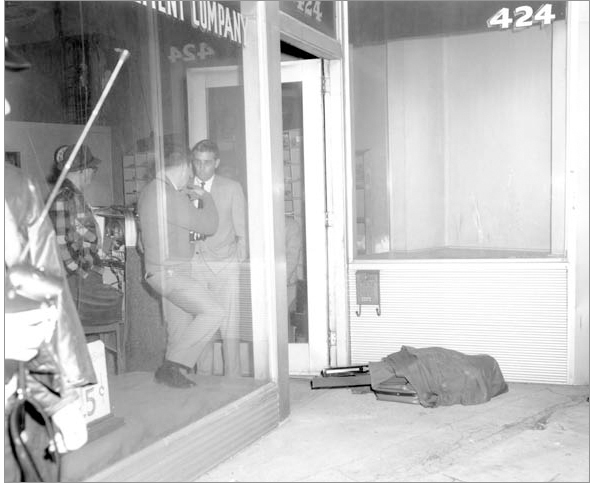
The green blanket that contained several key pieces of allegedly incriminating evidence, including a rifle and binoculars, found at the alcove in front of Canipe's Amusement Company. The material in this bundle would, over time, lead the FBI to James Earl Ray. Ray would claim that someone else planted the material to frame him. Source: Shelby County Registry of Deeds.
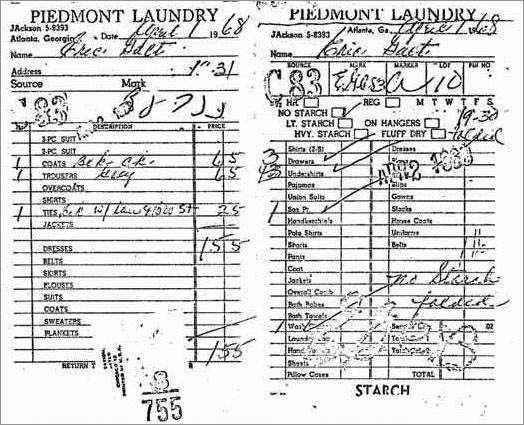
A laundry receipt from the Piedmont Laundry in Atlanta, Georgia, for Eric Galt, James Earl Ray's alias, dated April 1, 1968. This receipt, as well the confirmation from the laundry's owner, presented a dilemma for James Earl Ray and his attorneys. Hoping to avoid the incrimination charge that Ray was stalking King prior to the Memphis murder, Ray asserted that he went to Memphis before King even decided on a return date to lead another sanitation workers' strike. This receipt was strong evidence that Ray first went to Atlanta, King's hometown, and only went to Memphis after King announced his plans. Source: House Select Commitee.

The contents, sans rifle, found wrapped in a green bundle outside of Canipe's Amusement Company. Through diligent work, the FBI was able to trace several of these items to accused assassin James Earl Ray. Source: National Archives.
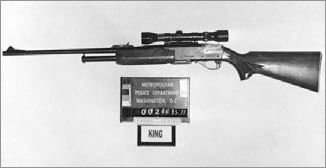
The Remington Gamemaster 30.06 rifle found in the bundle outside Canipe's restaurant. Authorities claim this was the murder weapon, but ballistics tests were inclusive. The rifle was traced to a gun shop in Birmingham, Alabama, and eventually to James Earl Ray. Ray bought a different weapon the day before but returned that gun for the Gamemaster. The store owner remembered Ray as claiming that he exchanged weapons on the advice of his brother-in-law. Ray claims this was a false reference to Raoul. Source: National Archives.
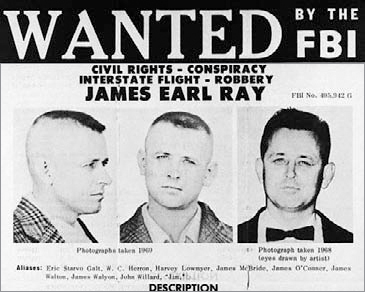
James Earl Ray's wanted photo, issued by the FBI in their massive manhunt for the alleged King assassin. It was only by the third week of April 1968 that the FBI finally connected Ray to the numerous aliases he used in Memphis and elsewhere. Source: Shelby County of Deeds.
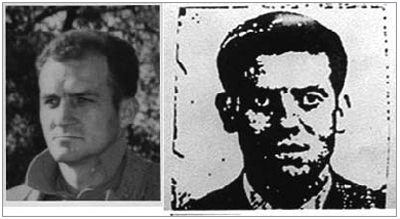
Both of these pictures were separately identified by James Earl Ray as being (or bearing a striking resemblance to) the mysterious figure Raul, the man who Ray claims manipulated his movements and eventually helped frame him for killing King. The photo on the left is of an individual photographed in Dealey Plaza after President John F. Kennedy's assassination; Ray said this person bore a “striking resemblance” to Raul. The photo on the right is a passport picture of an individual identified by Ray's last attorney, William Pepper, as being Raul; Ray positively identified this person as Raul. The Justice Department, in their 2000 investigation, checked this individual's whereabouts on the day of the King murder and determined he had a firm alibi. In either event, the reader is left to judge for himself if Ray's near-definitive identifications of both pictures as Raul are mutually exclusive; e.g. if the two pictures could possibly be identified as the same person by Ray. Source: Justice Department.

A schematic layout of the crime scene. Source: National Archives.
PEOPLE
Dr. Wesley Swift:
A militant extremist and Klan organizer who formed the Church of Jesus Christ Christian in 1946 in Lancaster, California, where he lived, Swift advocated a variation on Christianity that held that Jews were really the offspring of Satan, and that they manipulated other, non-white minorities, into a conspiracy against white Christians. Swift believed the world would be purified of Jews and minorities through a race war. His sermons on these matters, distributed through a network of newsletters and tape recordings, inspired militant white supremacists across the country, including Sam Bowers, J. B. Stoner, Sidney Barnes, Colonel William Potter Gale, and others.
Samuel Holloway Bowers:
Bowers was the Imperial Wizard, or leader, of the White Knights of the Ku Klux Klan of Mississippi (WKKKK) in the 1960s. Under Bowers's leadership, the WKKKK became, according to the FBI, the most violent Klan group in America. A devoted follower of Wesley Swift, Bowers was personally responsible for plotting the murders of the three civil rights workers in the Mississippi Burning case, and for ordering the firebombing of the home of voting rights activist Vernon Dahmer in 1966, that resulted in Dahmer's death. He also plotted the murder of farmer Ben Chester White in hopes of luring Martin Luther King Jr. into an ambush if King came to protest the White killing. He was investigated by Congress as a potential suspect in King's murder, but investigators never interviewed him. Bowers was convicted for his role in the Mississippi Burning murders in 1967 and sentenced to ten years in prison; he was not convicted for the Dahmer murder until 1998, when he was sentenced to life in prison. He died in prison in 2006.
Jesse Benjamin “J. B.” Stoner:
A Nazi aficionado, J. B. Stoner was one of the most active and outspoken white supremacists in America from the 1950s on through the 1970s. Stoner was the legal counsel for the supremacist group the National States' Rights Party and one of its leading voices, running for office under its banner on a number of occasions. With his close associate Conrad “Connie” Lynch, a minister in Wesley Swift's church, Stoner led counter-rallies against King's marches and other similar protests. He was suspected of plotting numerous bombings across the Southeast against black and Jewish targets. He offered a contract on Martin Luther King Jr.'s life in 1958, and was investigated by Congress in the 1970s as a possible suspect in King's murder. He was protected by attorney-client privilege, however, as he was one of convicted assassin James Earl Ray's attorneys in 1968â69. Stoner also had connections to James Venable and Joseph Milteer; some of the leading members of the White Knights of the Ku Klux Klan of Mississippi actively supported Stoner. Stoner was speaking to a several White Knights on the evening of April 4, 1968, when MLK was killed.
James Venable:
The longtime leader of the National Knights of the Ku Klux Klan (NKKKK), the second-largest KKK group in America in the 1960s, headquartered in Stone Mountain, Georgia, with subordinate groups across the country as far as California. Venable shared a law office with J. B. Stoner in Atlanta, Georgia. Venable was suspected of plotting to kill Martin Luther King Jr., with Stoner, in 1965. Venable also knew Joseph Milteer and employed Floyd “Buddy” Ayers.
Floyd “Buddy” Ayers:
An associate of James Venable, Ayers was, according to one witness, the “bagman” for the King murder, supplying money from Atlanta to Mississippi in connection with a bounty offer on Dr. King. Ayers gained national attention when he infiltrated MLK's funeral in 1968, and then later allegedly tried to kidnap MLK's father.
Joseph Milteer:
A rabid white supremacist, Joseph Milteer was an active supporter of the National States' Rights Party, a devoted follower of Wesley Swift, and the founder of his own, independent (racist) political group, the Constitution Party. Independently wealthy, Milteer traveled the country as a salesman, often meeting with other white supremacists, such as James Venable. Milteer is famous for having been secretly caught on tape, two weeks before the assassination of President John F. Kennedy, predicting JFK's assassination with a high-powered rifle from a high-story building. On that same tape, he said that others were plotting to kill MLK. Milteer was in Atlanta, Georgia, when James Earl Ray fled to that city after the murder of Martin Luther King Jr. A confidential source of researcher Lamar Waldron says that Milteer secretly raised the money to kill King in 1968.